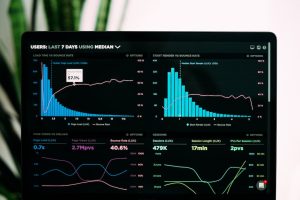Forex Forecasting: Combining Fundamental and Technical Analysis
When it comes to trading in the forex market, having the ability to accurately forecast price movements is crucial. Traders employ various techniques and strategies to predict the future direction of currency pairs. Two popular methods used by traders are fundamental analysis and technical analysis. While both approaches have their strengths and weaknesses, combining them can provide a more robust and comprehensive forecast.
Fundamental analysis involves evaluating the underlying factors that influence the value of a currency. These factors include economic indicators, monetary policy decisions, geopolitical events, and market sentiment. Traders who use fundamental analysis aim to identify the intrinsic value of a currency and make trading decisions based on whether a currency is overvalued or undervalued.
One of the key tools in fundamental analysis is economic indicators. These indicators provide valuable insights into the health of an economy and can help traders anticipate future currency movements. Some of the important economic indicators include GDP growth, inflation rates, unemployment rates, and consumer sentiment. For example, if a country’s GDP growth is strong, it is likely to attract foreign investors and lead to an appreciation in its currency.
Monetary policy decisions also play a significant role in fundamental analysis. Central banks use interest rates and other tools to manage the economy and influence the value of their currency. Traders closely monitor central bank statements and speeches to assess the outlook for interest rates. If a central bank is expected to raise interest rates, it can attract capital inflows and lead to a strengthening of the currency.
Geopolitical events and market sentiment can also have a significant impact on currency prices. Political instability, trade tensions, and unexpected events can create volatility in the forex market. Traders need to stay updated on global developments and understand how these events can affect currency movements.
While fundamental analysis provides a solid foundation for forecasting, it has its limitations. Economic indicators and geopolitical events can be unpredictable, and their impact on currency prices may not always be immediate or straightforward. Additionally, fundamental analysis requires a deep understanding of macroeconomics and the ability to interpret complex data.
This is where technical analysis comes into play. Technical analysis involves studying historical price patterns, trends, and chart formations to predict future price movements. Traders who use technical analysis believe that historical price data can provide insights into market psychology and help identify patterns that can repeat in the future.
There are various tools and indicators used in technical analysis, such as moving averages, oscillators, and support and resistance levels. Moving averages, for example, are used to identify trends and potential reversals. Oscillators, on the other hand, are used to identify overbought or oversold conditions in the market. Support and resistance levels are areas on a chart where prices have historically stalled or reversed.
Technical analysis is popular among short-term traders who rely on charts and patterns to make quick trading decisions. It provides a visual representation of market movements and can help traders identify entry and exit points. However, technical analysis alone may not provide a complete picture of the market as it does not take into account fundamental factors.
By combining fundamental and technical analysis, traders can benefit from the strengths of both approaches and increase the accuracy of their forecasts. Fundamental analysis can provide a long-term perspective and help traders understand the underlying value of a currency. Technical analysis, on the other hand, can provide short-term signals and help traders identify optimal entry and exit points.
For example, a trader who believes that a currency is undervalued based on fundamental analysis may look for technical indicators such as oversold conditions or bullish chart patterns to confirm their view. Conversely, a trader who believes that a currency is overvalued based on fundamental analysis may look for technical indicators such as overbought conditions or bearish chart patterns to support their view.
In conclusion, forex forecasting is a complex task that requires a combination of fundamental and technical analysis. While fundamental analysis provides insights into the underlying factors that drive currency movements, technical analysis helps identify short-term trends and patterns. By combining these two approaches, traders can enhance their forecasting abilities and make more informed trading decisions. However, it is important to note that no forecasting method can guarantee 100% accuracy, and traders should always exercise caution and manage their risks appropriately.






